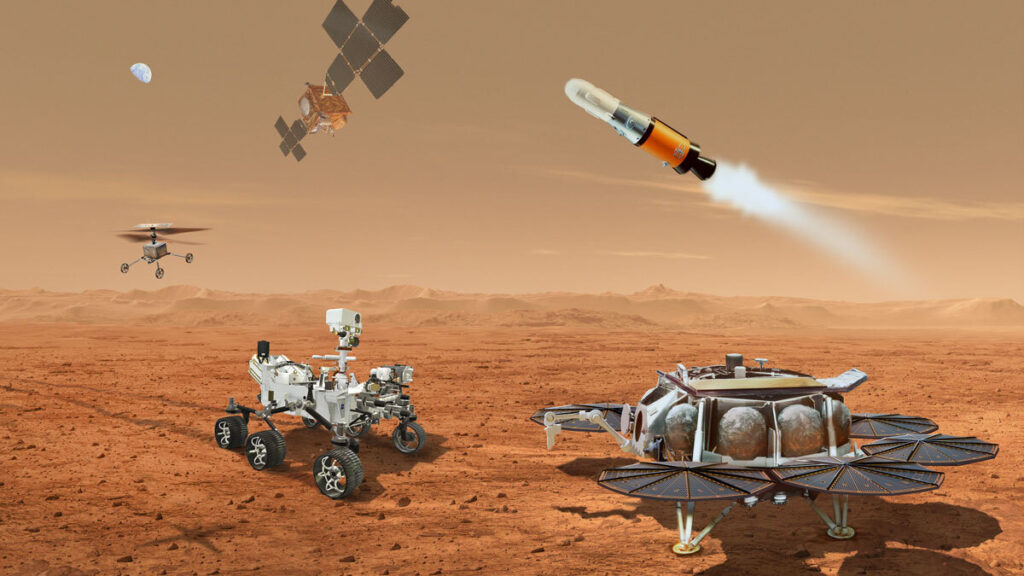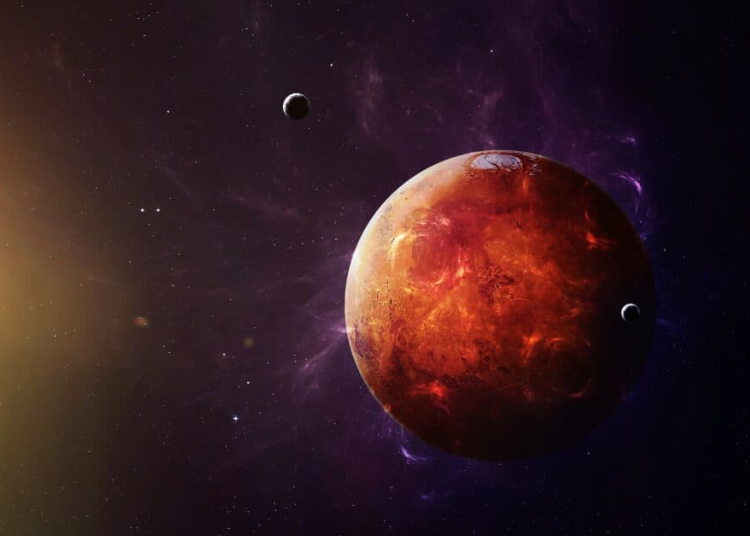Mars, the enigmatic red planet, has captivated humanity for centuries. We’ve sent rovers like Perseverance and the ingenious Ingenuity helicopter to explore its surface, but their mission goes beyond just taking pictures. They’re laying the groundwork for an even more audacious mission: bringing a piece of Mars back to Earth!
Perseverance: The Martian Rock Collector
Imagine Perseverance not just as a rover, but as a meticulous collector. It carefully drilled Martian rocks and soil, storing these precious samples – about the size of a piece of chalk – in special tubes. Right now, there are 23 of these “Martian souvenirs” waiting to be picked up!

The Mars Sample Return Mission: A Daring Mission for Martian Goodies
Enter the Mars Sample Return mission, a collaborative effort between NASA and ESA (European Space Agency). This incredible project will send a special spacecraft with a robotic arm to carefully pick up those sample tubes. Think of it as a super cool, gentle claw machine designed for the harsh Martian environment. This robotic arm has two special “fingers” that can grab the tubes from any angle without damaging them. It can even pick them up directly from Perseverance!
Double Trouble, Double the Fun: A Backup Plan for Martian Samples
The brilliant minds at NASA and ESA are always thinking ahead. Just in case the main plan hits a snag, they’re building tiny helicopters inspired by Ingenuity. These robotic marvels could swoop in and grab the tubes, like miniature versions of Ingenuity with special grippers for safe collection.
Why Bring Mars Home? Superpowered Labs Unlock Hidden Secrets
Unlike rovers with their onboard labs, these Martian samples need the power of Earth’s super-sophisticated laboratories. These facilities have powerful tools that can unlock the secrets hidden within the rocks. They might hold clues about whether Mars ever had life, or even if there’s life there now! Imagine being able to analyze these samples with the best equipment on Earth, searching for biosignatures – tiny hints of past or present life. This could completely change our understanding of Mars!

A Giant Leap for Mars-kind: Unveiling the Red Planet’s Story
The Mars Sample Return mission is a huge step forward in unravelling Mars’ mysteries. It’s like finally getting to hold a piece of the Red Planet and study it closely. This mission is about more than just rocks; it’s about retrieving a piece of Martian history, a chance to unlock its secrets and answer some of humanity’s biggest questions about life beyond Earth.
The Grand Martian Adventure: A Long Journey Home
The journey itself is an engineering marvel. The lander and its robotic arm won’t land on Mars until 2028. Then, they have the critical job of collecting the samples, storing them safely in the spacecraft, and preparing them for the long voyage home. The entire trip back to Earth will take several years, with the precious cargo arriving around 2033. The wait might seem long, but with each passing year, the excitement for this scientific revelation builds!
A Treasure Trove of Knowledge: What the Martian Samples Could Tell Us
The potential rewards from this mission are incredible. These Martian samples could be a treasure trove of knowledge. They could reveal if Mars ever had life, or even if there are simple organisms living there today! Imagine finding evidence of ancient Martian life forms, or even simple microbes thriving in the harsh Martian environment. The mission could also provide valuable insights into Mars’ geological history and how its climate has changed over time. By studying the rocks and their minerals, scientists could create a timeline of events that shaped Mars into the world we see today.
More Than Science: A Story of Human Curiosity and Exploration
The Mars Sample Return mission is about more than just scientific discovery; it’s a testament to human ingenuity and our unwavering desire to explore the unknown. It’s a global collaboration, a united effort to unravel the mysteries of our cosmic neighbour. As we eagerly await the return of these Martian treasures, one thing is certain: this mission has the potential to revolutionize our understanding of Mars and its place in our solar system. It’s a thrilling story of human exploration that will continue to unfold for years to come, and one that promises to rewrite the story of Mars.



















